Playground friendly planting scheme


Playground friendly planting scheme
When designing a playground, safety and aesthetics are paramount considerations. An often overlooked aspect is the choice of plants surrounding the play area. Playground-friendly plants not only enhance the overall ambiance but also contribute to a safer and more stimulating environment for children.
First and foremost, consider plants that are non-toxic and hypoallergenic. Many common garden plants can be harmful if eaten, so opt for non-poisonous species. A list of plants that are hazardous if ingested, or can cause irritation if touched, can be found on the RHS website and include Euphorbia, Digitalis, Taxus, Polygonatum and Lupinus.
Low-maintenance plants are a great choice to reduce the upkeep of communal areas. Playgrounds can be high-traffic zones, so robust plants like ornamental grasses and herbs require minimal care and can withstand the occasional trampling.
Furthermore, it’s crucial to avoid plants with thorns or spines like Berberis and Pyracantha. Smooth-leaved or hairy plants, such as Stachys, Hosta, Bergenia, ferns and Helleborus, are soft to touch, providing a sensory experience, and are safe for children to be around.
To promote biodiversity and a connection with nature, consider including native plants. They attract pollinators and teach children about local ecosystems. Geranium sanguineum, Viburnum opulus and native grasses like Carex pendula are excellent choices.
Choosing colourful plants not only brightens up the outdoor space but also introduce children to the world of gardening. If the area allows, it is beneficial to include a planting bed for children to grow varieties like marigolds, sunflowers, and nasturtiums.
Hedging species can create a natural boundary or be used to soften the look of fences and railings. They also provide visual screening, some acoustic absorption and create a windbreak. Fagus sylvatica, Prunus lusitanica and Photinia x fraseri ‘Red Robin’ are all appropriate.
Lastly, don’t forget to include plants that provide shade. Trees like Betula, Acer and Prunus can create naturally cooler zones for children to play under on hot summer days.
Incorporating playground-friendly plants not only adds beauty but also fosters a safe and inviting environment for children to explore and play. These plant choices promote growth, learning, and a connection with nature while ensuring their safety in the great outdoors.
1 Miscanthus sinensis ‘Kleine Fontäne’ 2 Verbena bonariensis 3 Ceanothus thyrsiflorus var. repens 4 Viburnum opulus 5 Hosta fortunei var. aureomarginata 6 Polystichum setiferum 7 Spiraea japonica ‘Golden Princess’ 8 Stachys byzantina 9 Geranium sanguineum 10 Bergenia cordifolia 11 Lavandula × intermedia ‘Grosso’ 12 Persicaria bistorta ‘Superba’ 12 Astilbe ‘Fanal’ (× arendsii)

①
Miscanthus sinensis ‘Kleine Fontäne’
A free-flowering ornamental grass that has slender leaves with white midribs, which transition to yellow in autumn. New tassel-like flowers emerge red-brown and fade to silver over time. Perfect for adding, height, colour and movement to a mixed border.

②
Verbena bonariensis
A sun-loving perennial that has tall branching stems with flattened heads of lilac-purple, late summer flowers. Verbena bonariensis works well as part of a prairie-style planting theme, alongside tall ornamental grasses, and can be positioned in any part of a sunny border.
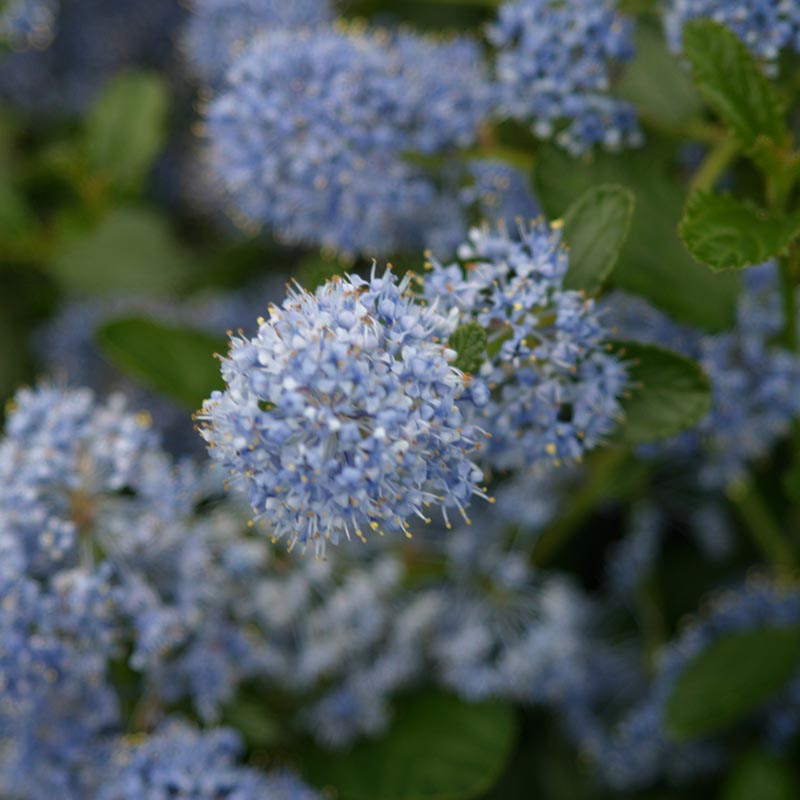
③
Ceanothus thyrsiflorus var. repens
A low-growing, mound-forming shrub with fluffy, light blue flowers in spring and early summer. Great for positioning in the front of sunny borders or against a sheltered wall, where it will grow much taller. One of the hardiest Ceanothus and its nectar-rich flowers are loved by pollinators.
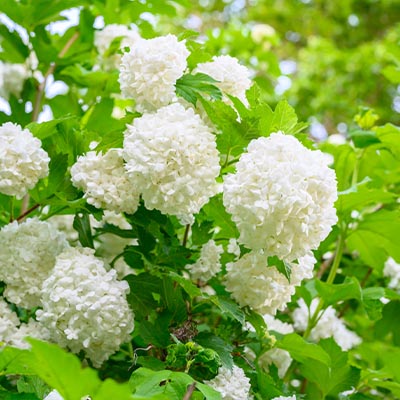
④
Viburnum opulus
A vigorous shrub with maple-like leaves that provide autumn colour. Snowball-like clusters of white, or green tinted, flowers appear in late spring and are followed by red berries. A low maintenance shrub that will require very little pruning.

⑤
Hosta fortunei var. aureomarginata
A perennial that forms a clump of large, green, heart-shaped leaves with yellow margins. Blooms clusters of trumpet-shaped, mauve flowers in summer. Provides a nice contrast to small-leaved plants and will brighten up shady borders.
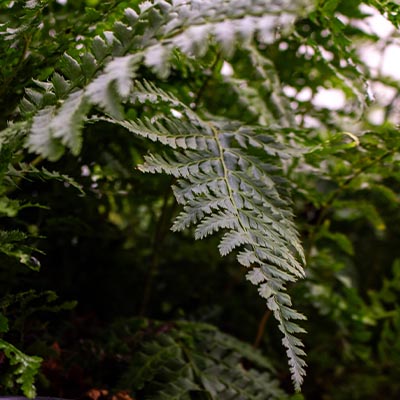
⑥
Polystichum setiferum
A large, native, evergreen, tufted fern with dark green, softly arching fronds and orange-brown stalks. The fronds emerge upright in habit until they unfurl and open. Thrives in shady spots under deciduous trees.
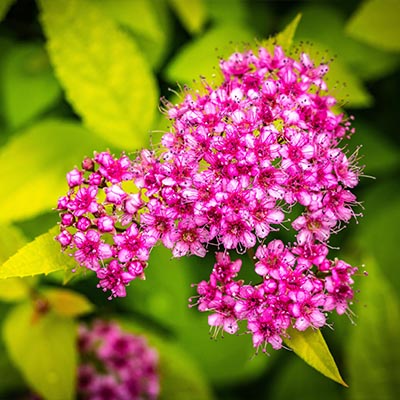
⑦
Spiraea japonica ‘Golden Princess’
A bushy deciduous shrub with leaves that are bronze when young, become golden yellow in summer and turn red in autumn. It has bright pink, flat flower heads in late summer. A good choice for adding a splash of colour.
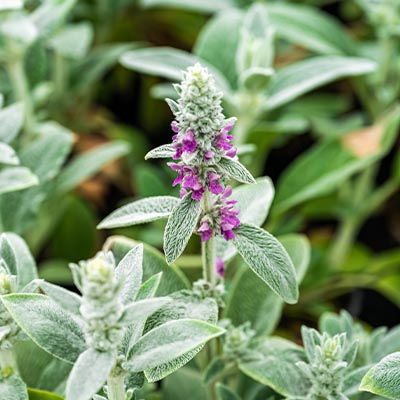
⑧
Stachys byzantina
A drought-tolerant ground covering perennial with soft, velvety, silver-green foliage and spikes of purple-pink flowers in summer. The leaves create a nice contrast with greener herbaceous perennials. Well suited to gravel gardens.
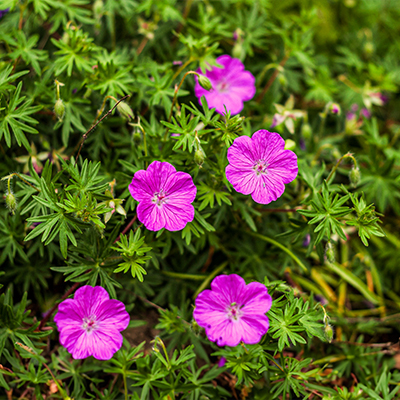
⑨
Geranium sanguineum
A spreading perennial with shiny, dark green leaves and cup-shaped, pink flowers with dark veins and white centres in summer. Geranium sanguineum is a great source of pollen and is ideal for underplanting shrubs and roses.
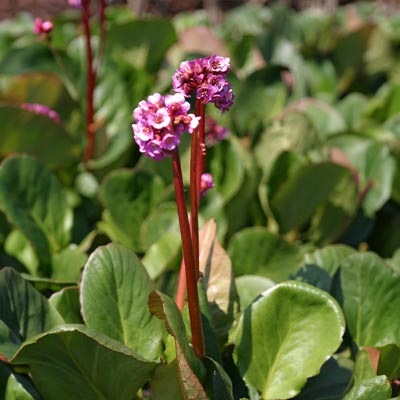
⑩
Bergenia cordifolia
A vigorous, evergreen perennial with erect red stems, spikes of deep-pink flowers in spring and broad, wavy leaves, which can grow up to 30cm long and often have a purple hue in winter. A great groundcover plant that is good for edging paths due to its robust leathery foliage.
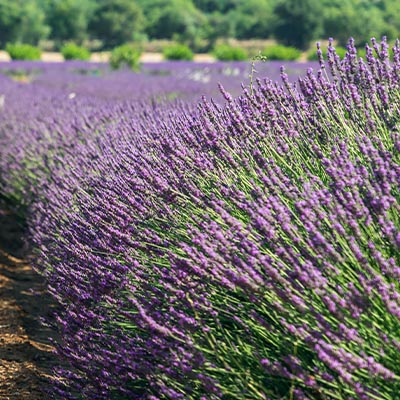
⑪
Lavandula x intermedia ‘Grosso’
An aromatic, evergreen shrub with long stems bearing grey-green foliage and clusters of large, violet flower heads. This robust variety has a long flowering period and is good for low hedging or a mixed border.

⑫
Persicaria bistorta ‘Superba’
A clump-forming, vigorous, semi-evergreen perennial with dense spikes of soft pink flowers summer, and veined, ovate, pointed, rich green leaves that turn red in autumn. Ideal for the front or middle of a flower border. Also works well planted as groundcover as it spreads rapidly.
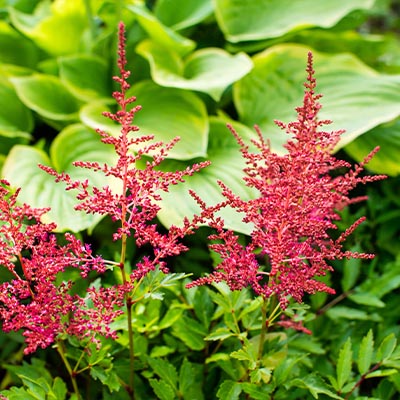
⑬
Astilbe ‘Fanal’ (× arendsii)
A compact herbaceous perennial with narrow, fluffy, dark crimson flowers and serrated, dark green leaves on stems. Perfect for adding a splash of colour to a shady border.

